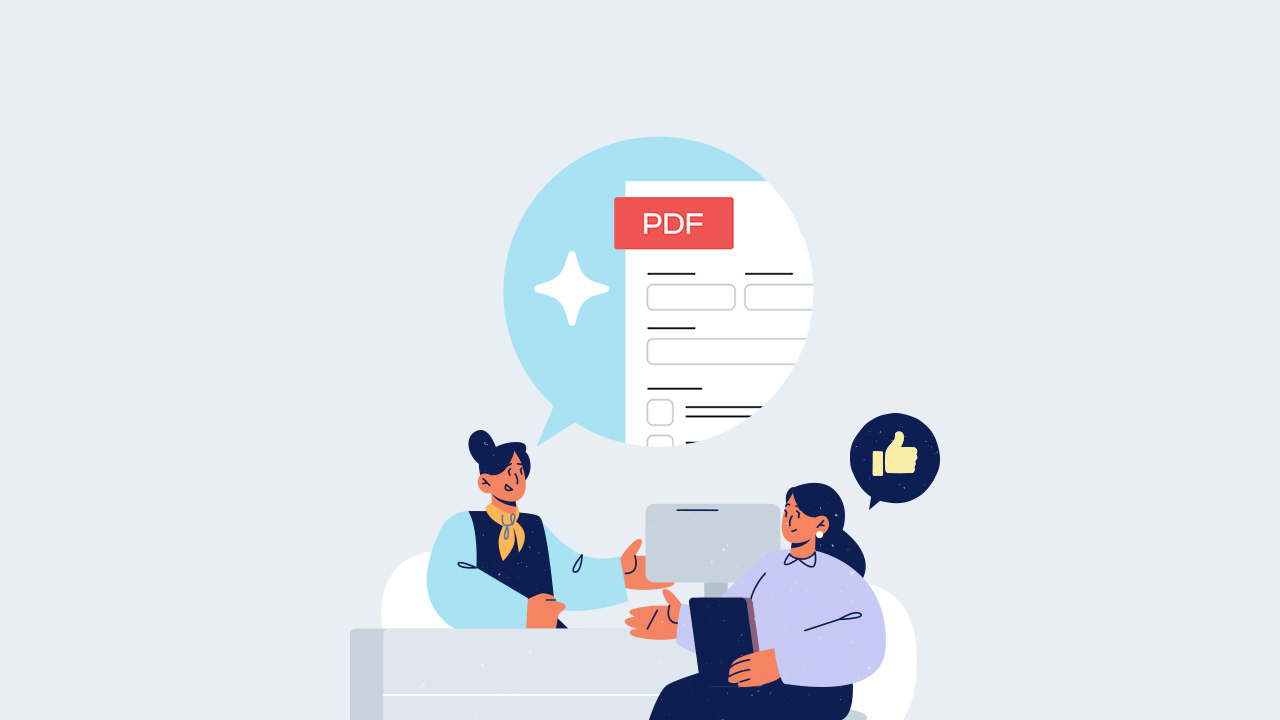
Filling out online forms - a seemingly mundane task that customers encounter across various websites. Whether it’s a registration form, a feedback survey, or an order placement form, the process often involves navigating through an array of fields, from personal details to payment information. No matter how sleek your online forms are, in the haste of completion, it’s not uncommon for customers to hit bumps in the road - a mistyped character here, an incomplete phone number there. But before we place blame on the customers, let’s delve into the intricacies of form design and the role error messages play in this digital journey.
The Challenge of Form Completion
Picture this: Your customers, feeling weary, are faced with a lengthy registration form. This form demands a trove of details – their name, address, contacts, and even credit card information. The sheer volume of information required can be overwhelming, leading to occasional slip-ups like misspelled characters or incomplete phone numbers. It’s like trying to solve a puzzle when you’re already exhausted.
Now, here’s a surprising fact: just one second of waiting for the page to load can make 7% of people change their minds about completing the form. The frustration that arises from errors can contribute to higher abandonment rates. But let’s pause and ponder – are your customers really to blame for these hurdles? Is it fair to point fingers when faced with the challenges of a complex and time-sensitive process? The answer might be more nuanced than it seems.
Form Validation and the Role of Error Messages
Recognizing the challenges customers face in filling out forms, the integration of form validation becomes crucial. It acts as a silent guardian, automatically checking for mistakes before customers can hit that submit button. Error messages, in this context, emerge as the guiding light when a mistake occurs, aiding customers in navigating through the labyrinth of form completion.
What is an error message? In the process of filling out forms, when individuals enter incorrect information, a real-time message pops up to promptly notify them about the inaccuracies. The primary purpose of an error message is to assist individuals in identifying the location of issues within the form and facilitating early-stage remedies.
The Dark Side of Error Messages
However, not all error messages are created equal. In fact, poorly crafted error messages can transform the seemingly straightforward task of form completion into a frustrating experience for customers. Let’s dissect the reasons behind this frustration:

-
Unclear Information:
If an error message is vague or lacks specificity, customers may find themselves at a loss, unable to decipher what went wrong and how to rectify it. -
No Guidance:
Failing to provide clear instructions on resolving the issue leaves customers feeling stranded, exacerbating their frustration. -
Repetitive Issues:
Encountering the same errors repeatedly without a resolution plan can significantly impact the overall experience, breeding frustration. -
Lengthy Processes:
Lengthy or convoluted error resolution processes can test the patience of customers, leading to dissatisfaction with the entire platform. -
Lack of Empathy:
Error messages devoid of a human touch or an acknowledgment of the inconvenience may further contribute to customer frustration.
The Power of Error Messages: Elevating Your Form-Filling Experience
Error messages - those little pop-ups that appear when something doesn’t quite match up during form filling. Have you ever wondered why they are so crucial? Well, let’s unravel the importance of error messages and how they play a pivotal role in enhancing your customers’ overall form-filling journey.
-
Bridging the gap:
Error messages act as messengers, signaling to your customers that a hiccup has occurred in their form submission. They provide valuable feedback on the status of their action, bridging the gap between the form’s requirements and what has been input by the customers.
-
Serving as guidance:
A well-crafted error message goes beyond just pointing out mistakes; it offers a guiding hand to users. These messages provide actionable suggestions on how to rectify the issue, assisting customers in navigating through the correction process.
-
Improving user experience:
The true magic of a helpful error message lies in its ability to enhance the user experience. Clear, informative, and descriptive messages don’t just highlight the problem; they empower form fillers to understand it. This, in turn, boosts the overall usability of your form, making the process smoother and more intuitive.
-
Enhancing trust:
Displaying effective error messages isn’t just about problem-solving; it’s a testament to your commitment to customer satisfaction. It showcases that your online form is meticulously designed, and you care about guiding your users through potential obstacles. As customers are led by these error messages, trust in your platform grows, making them more inclined to continue addressing issues and utilizing your form.
In conclusion, error messages are not just minor interruptions in the form-filling journey; they are invaluable aids that contribute to a seamless, user-friendly experience. So, the next time you see that pop-up, remember - it’s not just about pointing out errors; it’s about guiding your customers toward a smoother interaction with your online form.
Crafting Effective Error Messages: A Guide to What Works and What Doesn’t
Tip 1: Avoid the Blame Game
Ever stumbled upon an error message that sternly declares, “You entered the wrong information”? Let’s face it - pointing fingers at your customers is a big no-no. Remember, the customer is never wrong. When designing error messages, steer clear of negative language that makes them feel blamed for a simple mistake.
Instead, adopt a positive tone and avoid assigning blame to anyone or anything. Craft your error messages with a polite and professional attitude, using phrases like “please” to request corrections. A little courtesy can go a long way in leaving customers with a positive impression, even in the face of an error.
Tip 2: Clarity is Key
In the world of error messages, clarity reigns supreme. A vague or convoluted message is as good as no message at all. Your customers need to understand exactly what went wrong and how to fix it. Opt for clear and direct language that leaves no room for confusion.
For instance, rather than a generic “Your email address is invalid,” offer specific guidance like “Please enter your email address in the format: email@example.com.” This ensures that customers not only recognize the issue but also know precisely how to address it.
Tip 3: Provide Solutions, Not Just Problems
An effective error message doesn’t just highlight the issue; it guides users toward a solution. Offer actionable steps on how customers can correct the error. Whether it’s a missing field, an incorrect format, or invalid information, empower your users with straightforward instructions on how to make things right.
✅ Good Case:
Imagine a user entering an incomplete phone number on an online registration form. A well-crafted error message appears, saying, “Please ensure it has exactly 10 digits.” This friendly, specific, and actionable guidance ensures a positive user experience.

✖️ Bad Case:
In contrast, imagine a user encountering an error message that simply states, “Invalid phone number.” This lacks specificity and leaves the user wondering how to correct the mistake, potentially leading to frustration, confusion, and form abandonment.
Tip 4: Maintain a Consistent Tone
Consistency is key in maintaining a positive user experience. Ensure that your error messages align with the overall tone and style of your platform. A sudden shift in tone can be jarring for users and may impact their perception of your brand.
Whether your platform exudes professionalism or a more casual vibe, let that shine through in your error messages. Consistency not only reinforces your brand identity but also provides a familiar and comfortable experience for your users.
Tip 5: Test, Iterate, and Test Again
The effectiveness of your error messages can significantly impact user satisfaction. Regularly test and gather feedback on your messages, and be open to making improvements based on user responses. A little iteration goes a long way in refining the user experience and making error resolution a breeze.
In conclusion, designing effective error messages involves a delicate balance of empathy, clarity, and guidance. By following these tips, you can transform error encounters into opportunities for positive user engagement and problem resolution.
Customize Error Messages with PlatoForms
At PlatoForms, we get how important it is to make forms easy for users. That’s why we give you cool tools to customize your forms and error messages just the way you like. Our platform smoothly checks forms as users fill them out, giving them instant help. What’s cool? You have the power to make error messages match your brand’s style – whether you want it formal or friendly. We believe in making things user-friendly, and we’re here to give you the tools for a top-notch, personalized experience for your users as they breeze through their form-filling journey.




